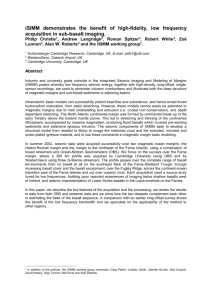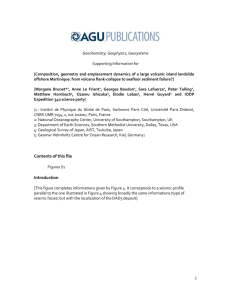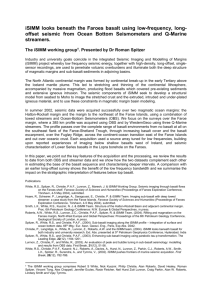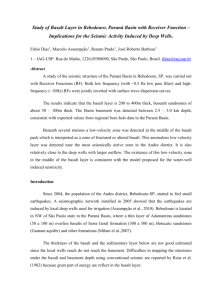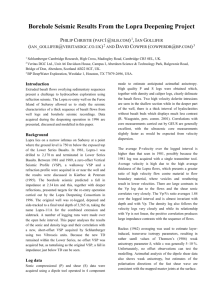Abstract
advertisement
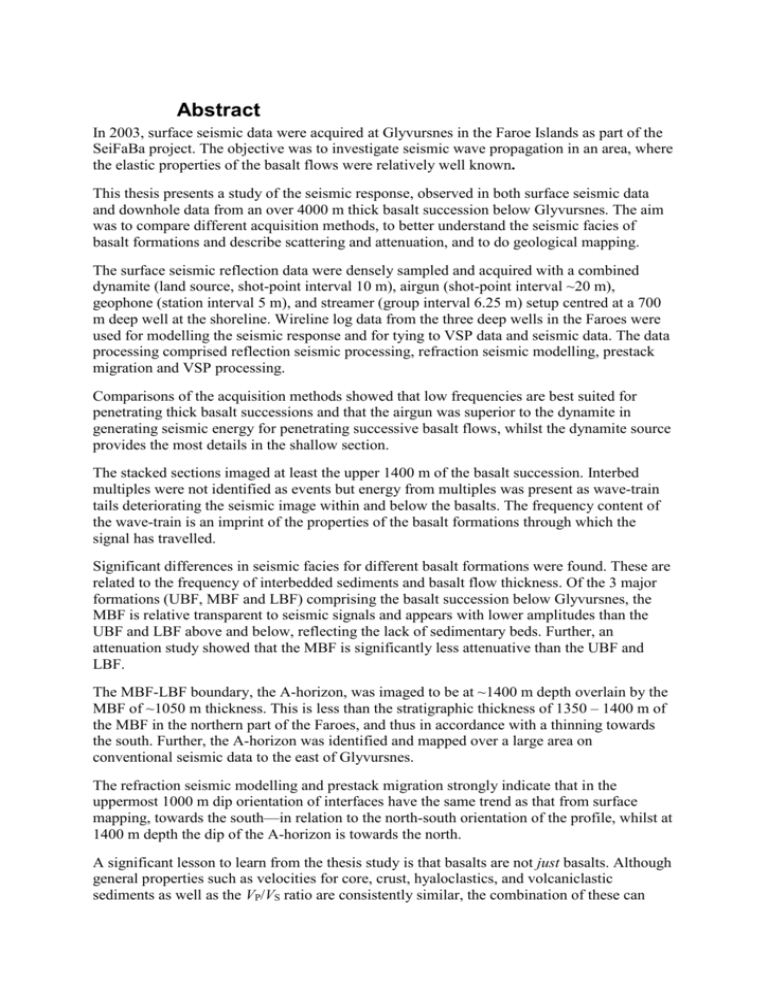
Abstract In 2003, surface seismic data were acquired at Glyvursnes in the Faroe Islands as part of the SeiFaBa project. The objective was to investigate seismic wave propagation in an area, where the elastic properties of the basalt flows were relatively well known. This thesis presents a study of the seismic response, observed in both surface seismic data and downhole data from an over 4000 m thick basalt succession below Glyvursnes. The aim was to compare different acquisition methods, to better understand the seismic facies of basalt formations and describe scattering and attenuation, and to do geological mapping. The surface seismic reflection data were densely sampled and acquired with a combined dynamite (land source, shot-point interval 10 m), airgun (shot-point interval ~20 m), geophone (station interval 5 m), and streamer (group interval 6.25 m) setup centred at a 700 m deep well at the shoreline. Wireline log data from the three deep wells in the Faroes were used for modelling the seismic response and for tying to VSP data and seismic data. The data processing comprised reflection seismic processing, refraction seismic modelling, prestack migration and VSP processing. Comparisons of the acquisition methods showed that low frequencies are best suited for penetrating thick basalt successions and that the airgun was superior to the dynamite in generating seismic energy for penetrating successive basalt flows, whilst the dynamite source provides the most details in the shallow section. The stacked sections imaged at least the upper 1400 m of the basalt succession. Interbed multiples were not identified as events but energy from multiples was present as wave-train tails deteriorating the seismic image within and below the basalts. The frequency content of the wave-train is an imprint of the properties of the basalt formations through which the signal has travelled. Significant differences in seismic facies for different basalt formations were found. These are related to the frequency of interbedded sediments and basalt flow thickness. Of the 3 major formations (UBF, MBF and LBF) comprising the basalt succession below Glyvursnes, the MBF is relative transparent to seismic signals and appears with lower amplitudes than the UBF and LBF above and below, reflecting the lack of sedimentary beds. Further, an attenuation study showed that the MBF is significantly less attenuative than the UBF and LBF. The MBF-LBF boundary, the A-horizon, was imaged to be at ~1400 m depth overlain by the MBF of ~1050 m thickness. This is less than the stratigraphic thickness of 1350 – 1400 m of the MBF in the northern part of the Faroes, and thus in accordance with a thinning towards the south. Further, the A-horizon was identified and mapped over a large area on conventional seismic data to the east of Glyvursnes. The refraction seismic modelling and prestack migration strongly indicate that in the uppermost 1000 m dip orientation of interfaces have the same trend as that from surface mapping, towards the south—in relation to the north-south orientation of the profile, whilst at 1400 m depth the dip of the A-horizon is towards the north. A significant lesson to learn from the thesis study is that basalts are not just basalts. Although general properties such as velocities for core, crust, hyaloclastics, and volcaniclastic sediments as well as the VP/VS ratio are consistently similar, the combination of these can form basalt formations with quite different properties when considering seismic facies and attenuation. An implication of this is that determining base of basalts directly from seismic data is difficult.
